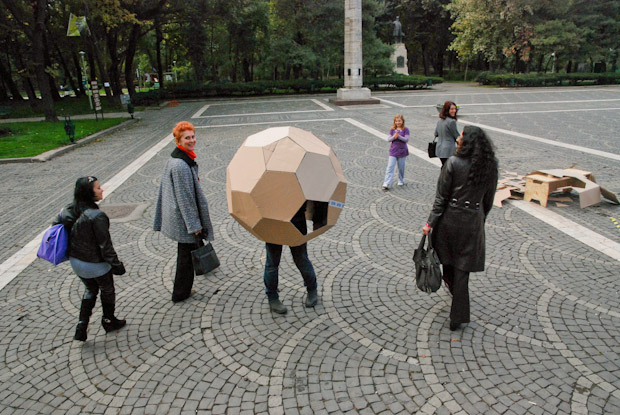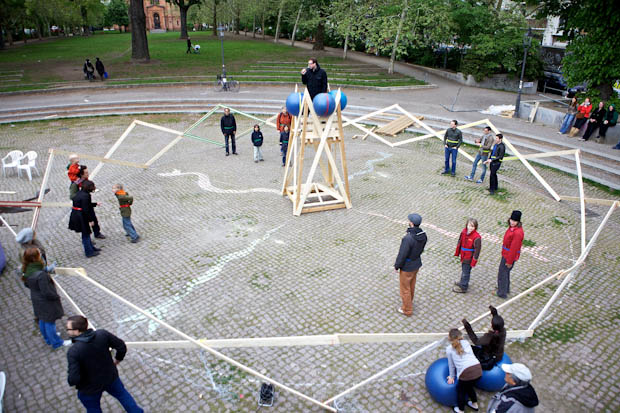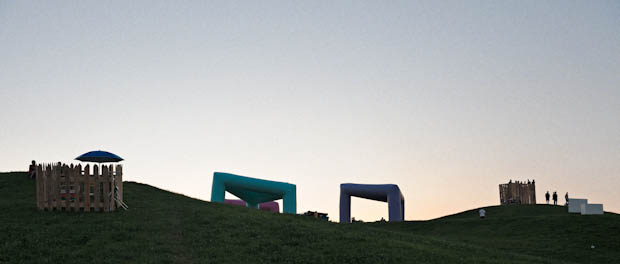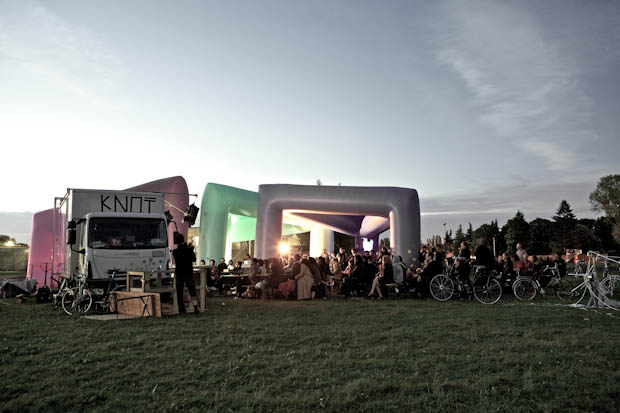THE KNOT
This project has been funded with support from the European Commission. This publication reflects the views only of the author, and the Commission cannot be held responsible for any use which may be made of the information contained therein.
Organised by:
Goethe-Institut, Polish Institute, Raumlabor Berlin und Asociatia E-cart.ro.
Supported by:
European Commission -”Programme Culture 2007-2013”, Hauptstadtkulturfonds Berlin, Romanian Cultural Institute in Berlin and Warsaw, Neuer Berliner Kunstverein, Goethe-Institut Bucharest, Polish Institute Bucharest, Austrian Cultural Forum Bucharest
Co-operation partners:
Kunstraum Kreuzberg/Bethanien, Fundacja Bęc Zmiana, Skulpturenpark Berlin/ KUNSTrePublik e.V., DISK e.V. & CTM.
Further information:
The Promised City, Knotland – The Knot Homepage, Social Network Photos by Joanna Erbel (1,2,3,4,5,6,7,8,9,10,11,12,13,14,15,16), The Knot Social Network Group
THE KNOT is a mobile platform for artistic presentation and production, inhabiting different areas of public space, and offering itself as an open space of encounter, exchange and experimentation. In 2010 The Knot visited Berlin, Warsaw and Bucharest, stopping in each city for a few weeks.
The physical core of the project consists in a specially designed structure, adaptable to different urban situations, easily expandable and transportable. This unit responds to the programmatic needs of the KNOT project, comprising different functions such as: production/manufacture workshop, kitchen, café, laboratory, classroom, stage, dormitory, disco, exhibition space, and archive.
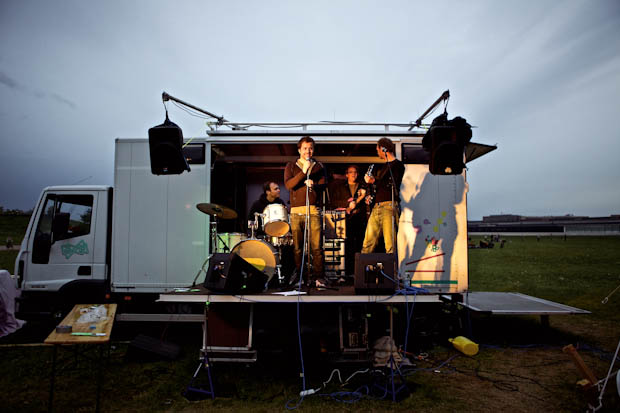
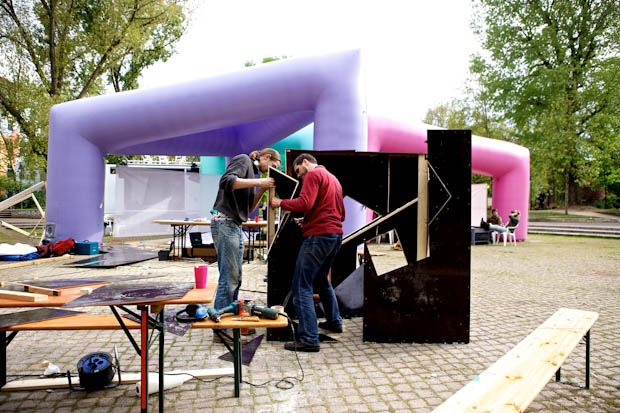
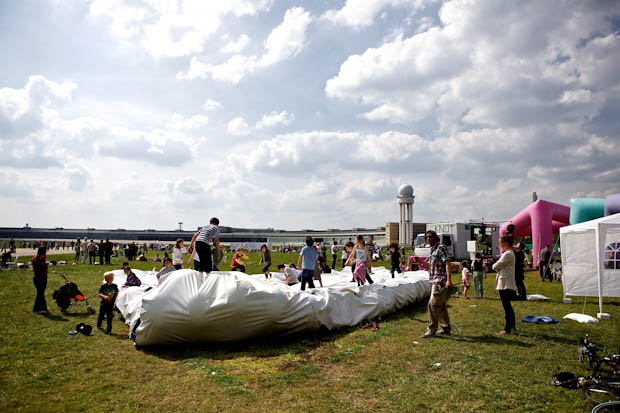
Through its unexpected presence in the city, THE KNOT proposes a model for social interaction, thus being not so much a container as a transformer, creating new ways in which the public space could be used and produced. The participants invited by the curatorial collective to activate THE KNOT put forward not only their professional skills, but also their physical company, their desires and imaginative will. They became temporary members of a protean and nomad crew, acting both as hosts and guests in a shared and welcoming place.
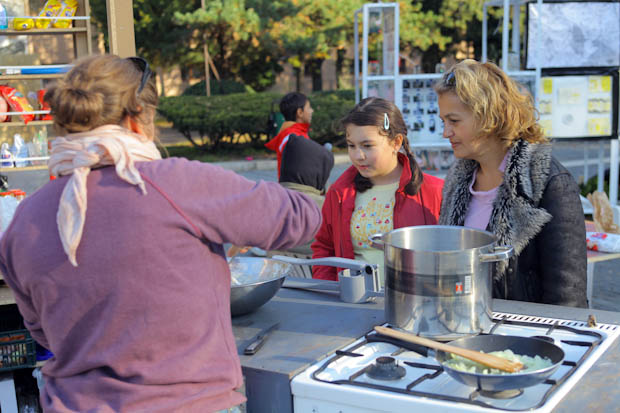
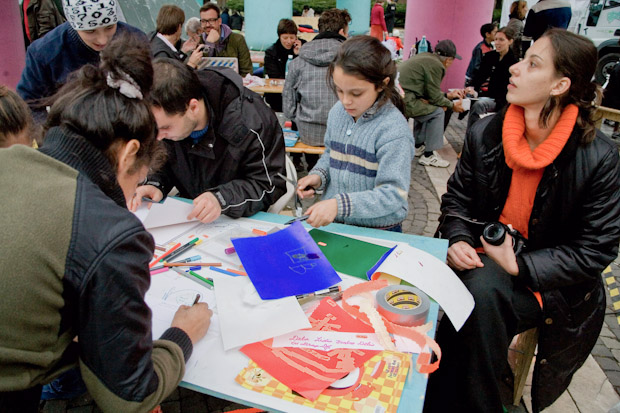
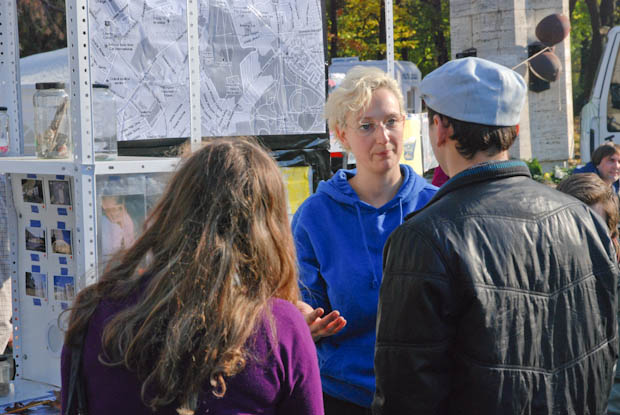
At the intersection between the real and the imaginary, THE KNOT is an initial point where a thorough examination of the relationships between the individual, the group and the place of interaction is undertaken. The project responds to the increasingly normative way in which these relationships are defined in our current societies. Envisioning alternative behaviours in the city, based on cooperation and self-empowerment is one of the main tasks of THE KNOT. Also of actual relevance is to explore what is left of collective ideals or how one can overcome the current conditions of harsh economic competition and the tendency towards national or ethnic isolation. Temporary communities are the tool of creating another notion of a “promised city”, apart from its capitalist vision.
The project takes its inspiration from and links back to the cities of Berlin, Warsaw and Bucharest, always with references to other cities wherefrom the participants originate or live. Personal and institutional partnerships in each place make THE KNOT a living organism which is integrated in the life of the city. At the same time an obstacle disrupting the daily habits and rituals, and an autonomous zone of experiment, THE KNOT provokes and satisfies the public with every object, performance, installation, action, screening, party, discussion, meeting, workshop, dinner or other activity which takes place in and around it.
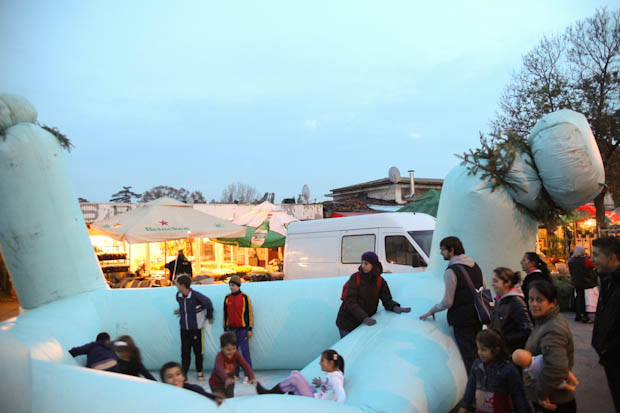
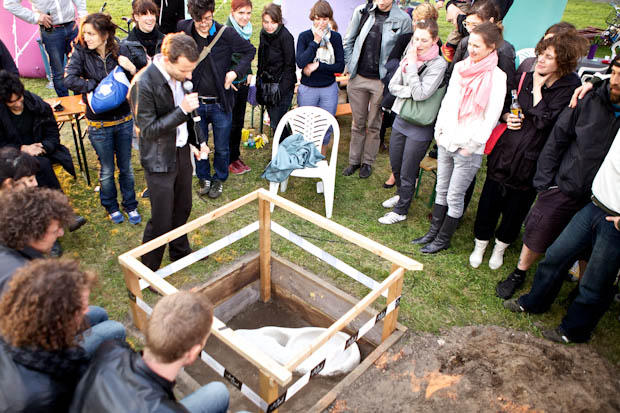
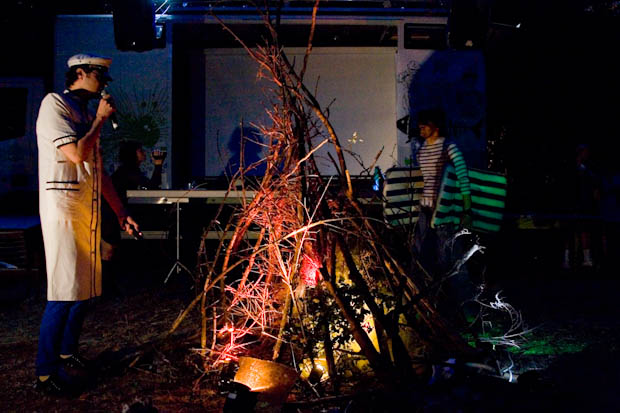
THE KNOT is part of the project „The Promised City“, initiated by Goethe Institute Warsaw & Polish Institute Berlin, a cultural initiative between Berlin and Warsaw with cooperations in Mumbai and Bucharest: artists, curators, culturally engaged personalities and scientists from Germany, Poland, India and Romania develop numerous new artistic productions, which are interdisciplinarily debating dreams, illusions and the luck-promising modern metropolises.
THE KNOT gathered a quite significant group of artists, urbanists, architects, intellectuals, theoreticians and activists in every city. We chose to implement different styles of work with them, depending on the scale of involvement, type of contribution, time spent within the KNOT, the amount of resources available for conducting new commission.
